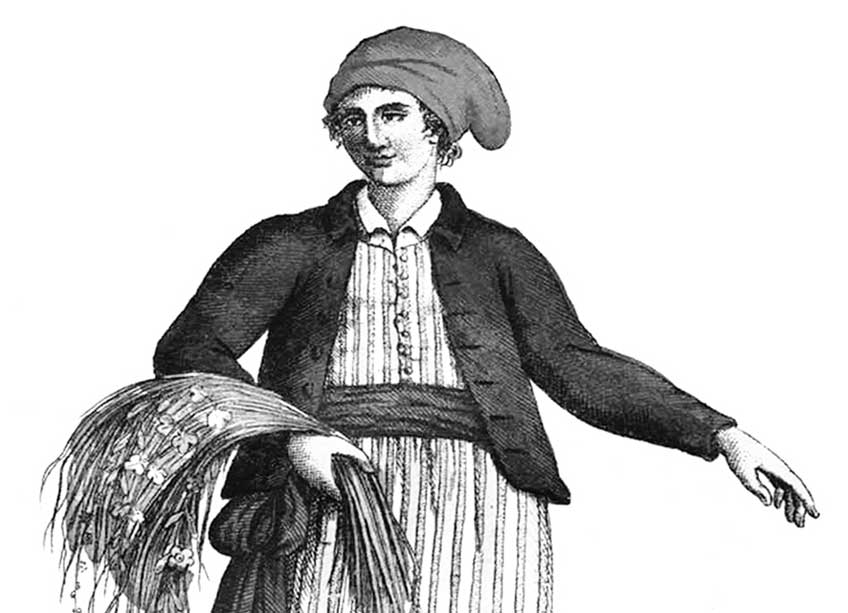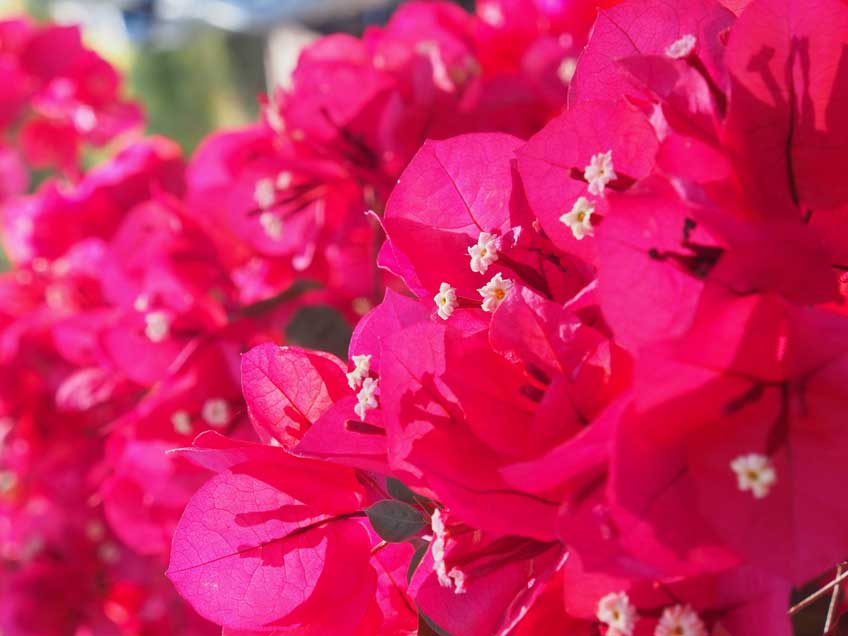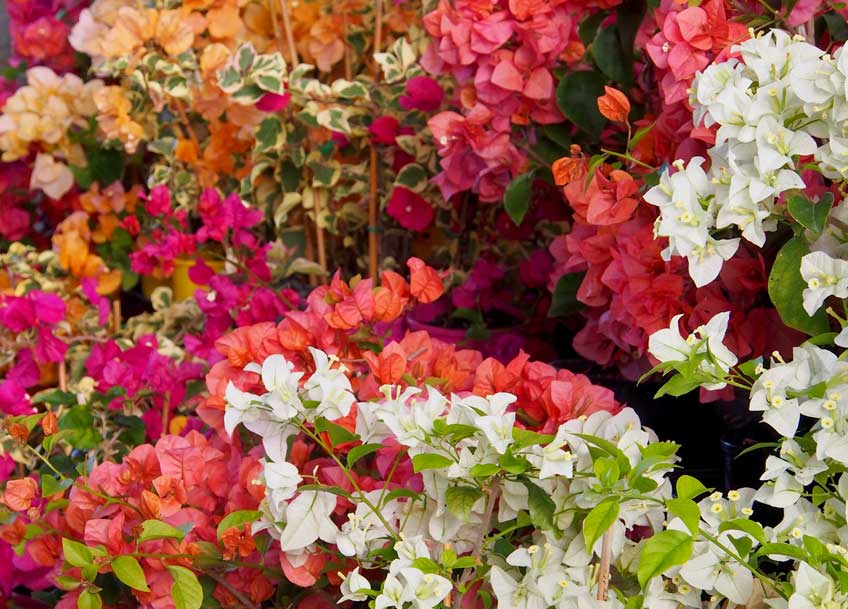Jeanne Baret disguised herself as a boy to join her naturalist lover on Louis de Bougainville’s great expedition.
A fine botanist in her own right, Jeanne is now thought to have collected the first specimens of bougainvillea in the jungles of Brazil.

Sometime between 1760 and 1764, Jeanne Baret, a country girl and amateur botanist with a wide knowledge of medicinal plants, became the housekeeper and
lover of naturalist and botanist Philibert Commerçon, friend of Voltaire and correspondent of Carl Linnaeus. Several years later, in 1766, Louis-Antoine
de Bougainville was selected to command an expedition to discover flora and fauna of commercial value that would flourish in France or her colonies,
and Commerçon was invited to join it. It was the first expedition to include a professional naturalist paid for by a sovereign, and aimed to be the
first French circumnavigation of the world.
Commerçon’s senior role permitted him a servant, but the French Navy did not allow women on board ships, so in a daring plan, for which she became famous,
Jeanne bound her breasts in tight strips of linen, wore baggy clothes, changed her name to Jean, and joined Commerçon as his botanical assistant and
personal valet. Although there were mutterings among the crew, her plan succeeded until 1767 when the ships reached Tahiti and the indigenous people
saw through her disguise. Nothing is reported of their relationship after her discovery, other than that she continued to be dedicated to him and to
botanising in search of new plants.

Plant hunter in disguise
In A Voyage Around the World, his published account of the trip, Bougainville recalled: ‘For some time there was a report in both ships, that
the servant of M. de Commerçon, named Baré, was a woman. His shape, voice, beardless chin, and scrupulous attention of not changing his linen, or making
the natural discharges in the presence of any one, besides several other signs, had given rise to, and kept up this suspicion. But how was it possible
to discover the woman in the indefatigable Baré, who was already an expert botanist, had followed his master in all his botanical walks, amidst the
snows and frozen mountains of the straits of Magalhaens, and had even on such troublesome excursions carried provisions, arms, and herbals, with so
much courage and strength, that the naturalist had called him his “beast of burden”?’
Commerçon was equally complimentary, writing that Jeanne traversed the highest mountains with agility and the deepest forests without complaint: ‘Armed
with a bow like Diana … armed with intelligence and seriousness like Minerva … she eluded the snare of animals and men, not without many
times risking her life and her honor.’ Commerçon praised her for the numerous plants she collected, the herbaria she constructed and the collections
of insects and shells she curated.
Most populist literature focuses on Jeanne Baret’s story of deception, rarely mentioning her botanical skills. Yet she and Commerçon workedtogether,and
when he suffered from ill health, as he often did on the voyage, she collected alone.
One of the expedition’s most notable collections is thought to have been made by Jean. On the basis of notes made by the ship’s surgeon, the hypothesis
has been put forward that because of the varicose ulcers and gangrene that constantly afflicted him, Commercon was possibly too ill to collect plants
during his stay in Rio de Janeiro between 13 and 25 June, 1767. All of the plants from that location were therefore gathered by Baret - one of the
many times she might have assumed the role of chief botanist.It was here that a flamboyant scrambling plant was collected and later named Bougainvilla spectabilis in honour of the expedition’s commander.

Recognition at last
When Commercon died, aged 46, after years of ill health, Baret married French officer Jean Dubernat on Mauritius, returning to France several years later
in 1774, and becoming the first woman to sail across the Pacific and to circumnavigate the world.
More than 70 different types of flora and fauna were named after Commercon, yet despite her vital role in the expedition, not a single species was named
after Baret. It was not until 2012 that a new species of Solanum from the Andean cloud forest of Ecuador and Peru was named Solanum baretiae. A distinguishing feature of the plant is its numerous leaf shapes - simple or divided, with varying numbers of leaflets - the perfect plant to commemorate
Jeanne Baret, botanist and master of disguise!

This is an edited extract from The Secrets of Great Botanists: and what they teach us about gardening, by Matthew Biggs, published by Exisle,
rrp $35.
Gutter credit: © Quarto Publishing PLC 2019